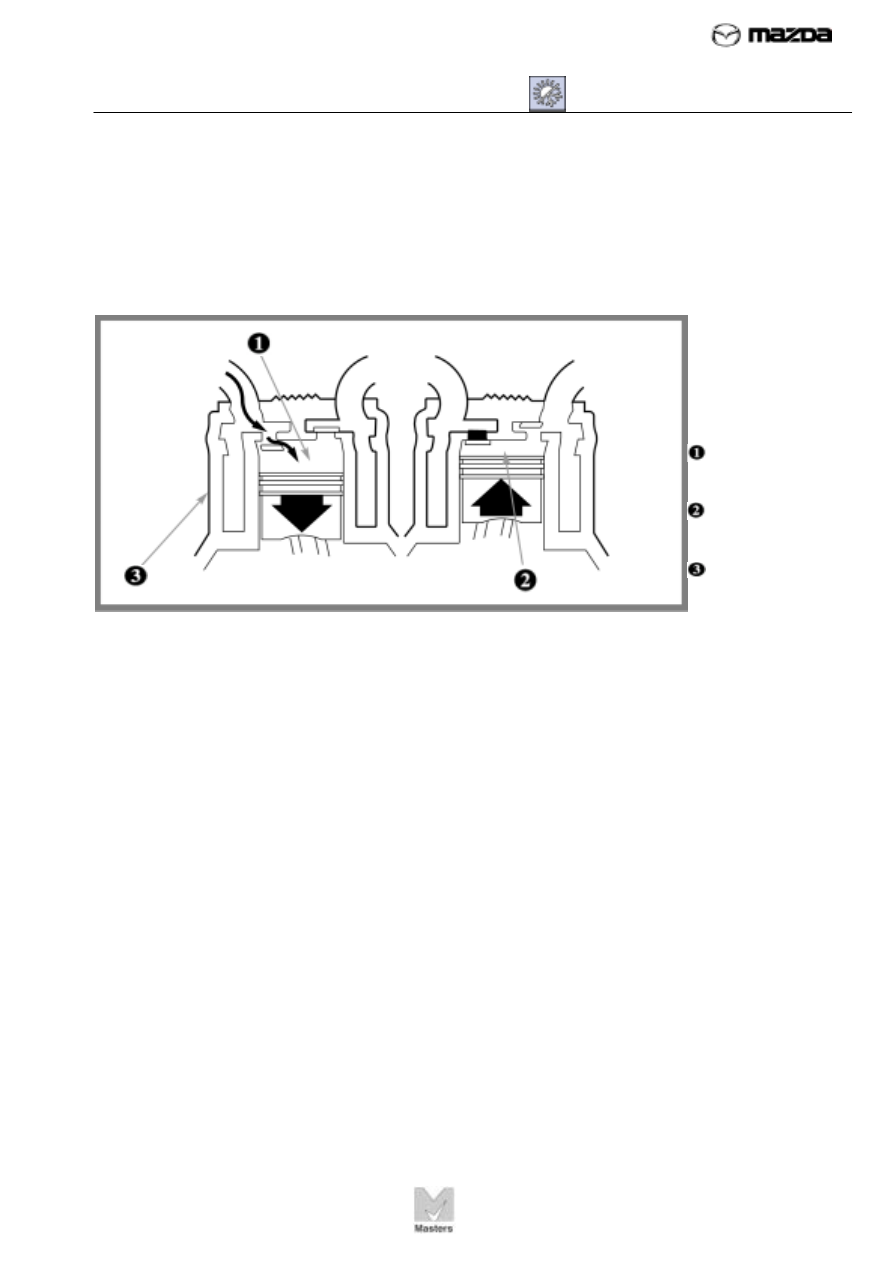Mazda Training manual - part 262

Air Conditioning Fundamentals
TC070-05-01S
4 – PRINCIPLES OF
REFRIGERATION
22
Principle Six: Compressed Vapor
The sixth and final principle states that when you compress a vapor, its
pressure and temperature will increase even though you add no heat.
The refrigerant vapor in an automotive air conditioning system is
compressed to as much as 250 psi or more. This raises the temperature
of the vapor, as well as the boiling and condensation points. Figure 8
shows this principle in action.
As the illustration shows, if you compress a refrigerant from 30 psi to
175 psi, the vapor temperature increases from 32° F (0° C) to 130° F
(54° C). At the same time — according to Principle Five — the boiling
point and condensation point of the vapor also increase, since the vapor
is under higher pressure.
This increase in the temperature of the compressed vapor is not due to
any increase in heat stored in the vapor. If you remove heat from the
130° F (54° C) vapor, it will condense into a liquid without changing
temperature. The heat given up during this change of state is the latent
heat of condensation. Moreover — according to Principle Four — the
temperature of the refrigerant will not decrease until the entire vapor
condenses into liquid.
FIGURE 8. When a
vapor compresses,
its temperature
and pressure
increase without
heat being added.
Vapor @ 30 psi.
32° F (0° C)
Vapor @ 175 psi,
130° F (54° C)
Compressor
Intake side
Vapor
Discharge side